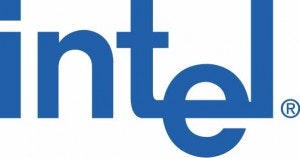
This article will analyze Haswell’s potential to make a positive impact on eroding PC sales, particularly when Intel Corporation (NASDAQ:INTC)’s financial results have been battered due to a shrinking PC market.
Intel launches Haswell in June
Intel plans to launch its much-awaited Haswell microarchitecture on June 3 at the Comdex 2013 show in Taiwan. It will be launched in three major forms:
- Desktop version
- Mobile/Laptop version
- BGA version
Intel Corporation (NASDAQ:INTC)’s prediction is that its PC and data center units will see an increasing demand for its processors by the end this year. Microsoft’s Windows 8 enabling touch will help a PC comeback. An Ultrabook with a detachable keyboard and Windows 8 preloaded will be way more appealing than a so-called tablet. And it will be way more efficient as well. During the latest earnings call, Intel CFO Stacy Smith said:
I think that as the OEMs start looking at new form factors that they can design around our new chips (Haswell in particular and maybe Bay Trail) and Windows 8 enabling touch, the explosion and form factors and competitiveness of that platform is going to be substantially different at price points down into the [$300] or $400 range enabling touch. We didn’t have that last year. So you go into the prime selling season with new products, new technologies, new form factors, and new capabilities that up to now [had] unapproachable price points.
Haswell is a “tock” in Intel’s tick-tock cadence. Intel Corporation (NASDAQ:INTC)’s fourth Generation Core 22-nm processors based on Haswell will have 22-nm Tri-Gate ‘3D’ transistors. Intel’s 22-nm FinFET SoC process will ensure that customers will get huge performance boost. Haswell will incorporate four cores in the SoC. Haswell’s on-die GPU will support DirectX 11.1, OpenGL 4.2, and OpenCL 1.2 for advanced graphics performance on PCs.
How does AMD’s hUMA stack up against Haswell
Based on hUMA (heterogeneous Uniform Memory Access), Advanced Micro Devices, Inc. (NYSE:AMD) plans to launch its first processor, codenamed Kaveri, using Advanced Micro Devices, Inc. (NYSE:AMD)’s Steamroller cores with a GPU. Kaveri could emerge as a stiff competitor for Intel Corporation (NASDAQ:INTC)’s Haswell, particularly for playing games on PCs.
AMD has also won its place inside the latest versions of gaming consoles, namely Microsoft Corporation (NASDAQ:MSFT)’s Xbox One and Sony Corporation (ADR) (NYSE:SNE)’s PS4 with its 8 Jaguar cores. But, experts believe that with the advent of mobile gaming and free internet games on PCs, high-end console-based games may lose steam going forward.
However, it remains to be seen how Haswell performs against Advanced Micro Devices, Inc. (NYSE:AMD)’s Kaveri in graphics-intensive applications like games on PCs.
Can Haswell outperform the ARM chips
ARM Holdings plc (ADR) (NASDAQ:ARMH) believes that its thin processors will have an edge over its competitors, including Intel. ARM Holdings plc (ADR) (NASDAQ:ARMH)’s FinFET process technology for nodes smaller than 20-nm is currently being developed at Globalfoundries, Samsung, and Taiwan Semiconductor. Globalfoundries intends to have 14nm FinFET in volume manufacturing in 2014, the same timescale as Intel has for introducing 14nm FinFET manufacturing. Intel will launch 14nm Broadwell, the “tick” version of Haswell microarchitecture sometime in 2014.
Globalfoundries’ 14-nm process may have smaller features than Intel’s 14-nm process because, says Mojy Chian, senior VP at Globalfoundries, “Intel’s terminology doesn’t typically correlate with the terminology used by the foundry industry. For instance Intel Corporation (NASDAQ:INTC)’s 22nm in terms of the back-end metallization is similar to the foundry industry’s 28nm. The design rules and pitch for Intel’s 22nm are very similar to those for foundries’ 28nm processes.”
However, right now, it can only be said that at 14nm, Intel Corporation (NASDAQ:INTC)’s FinFET “3D” transistor technology will face real competition from ARM Holdings plc (ADR) (NASDAQ:ARMH), which is currently absent at 22nm.
Conclusion
Despite competition, Haswell is expected to outperform equivalent chips on PCs mainly due to its energy efficiency with long battery life. Moreover, it’s potential for making a PC turnaround is a realistic assumption. Intel’s stock is currently undergoing a consolidation phase, but I expect it to appreciate going forward.
The article PC Industry to Stage a Turnaround With Intel’s Haswell originally appeared on Fool.com and is written by Mithu Batabyal.
Mithu Batabyal has no position in any stocks mentioned. The Motley Fool recommends Intel. The Motley Fool owns shares of Intel. Mithu is a member of The Motley Fool Blog Network — entries represent the personal opinion of the blogger and are not formally edited.
Copyright © 1995 – 2013 The Motley Fool, LLC. All rights reserved. The Motley Fool has a disclosure policy.